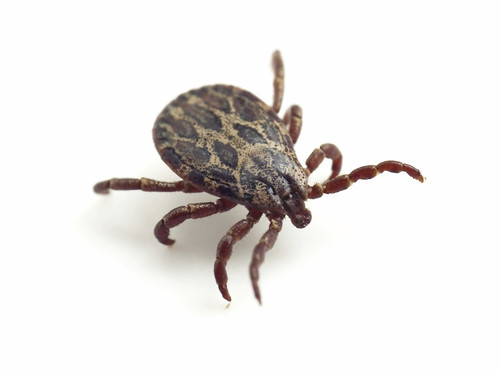
Many people are squeezing in the last bit of summer by enjoying the outdoors through walks, hiking on trails, biking, camping, outdoor sports, and picnics in parks and forests. Unfortunately, these activities – sometimes even in our own backyards – increase our risk of being exposed to ticks and the diseases they carry.
Ticks are a nuisance. No one wants anything on their body that drinks their blood or – worse than that – also give you a disease. Most people are familiar with Lyme disease, but not the many other equally serious diseases that ticks carry. The Centers for Disease Control and Prevention (CDC) now lists 14 diseases that ticks in the United States can transmit and cause human disease. The CDC website also has regional distribution maps with pictures of the ticks that carry these diseases and where in the nation they are most like to be.
My family and I were reminded several weeks ago of the health threat from ticks when my wife and granddaughter went on an overnight school camping trip. My granddaughter returned home tick-free, but my wife found three small deer ticks embedded in her skin. So far, she is fortunate that she has not shown any symptoms of Lyme disease, but her physician has scheduled a blood test because Lyme disease is common in our area. So my wife’s ordeal with ticks is not over yet.
USDA’s National Institute of Food and Agriculture (NIFA) and Agricultural Research Service are on the front line in the fight against diseases caused by ticks and other pests. In one such project, fisheries and wildlife researchers at Michigan State University are working to improve detection to help control and reduce the risk to public health. In another project, entomologists at the University of Wisconsin are looking to improve agricultural production because ticks are carriers of animal diseases as well as human diseases. Both projects are funded with NIFA-administered Hatch Act grants.
What can you do to avoid ticks and the risk of diseases they carry for the rest of this summer? The CDC has suggestions on steps everyone can take to avoid ticks on themselves, their pets, and in their yards. Here are a few things you can do:
- Learn what ticks and tick diseases are common in the area where you live or where you are going on vacation.
- Avoid direct contact with areas where ticks are normally found, such as wooded areas with bushes and high grass, weeds, and leaf litter.
- If in areas with ticks, frequently give yourself full-body checks for ticks. If you find a tick remove it immediately and correctly.
- Consider using tick repellents on clothing. You can effectively treat boots, pants, shirts, socks, and tents with products containing 0.5% permethrin.
- Keep yourself informed about ticks and diseases caused by ticks. The University of Rhode Island’s TickEncounter Resource Center is a great practical resource on all aspects of ticks, tick prevention, and how to remove ticks correctly.
Through federal funding and national program leadership, NIFA supports research, education, and extension programs to address pest management challenges on an appropriate scale—from local and county levels to multi-state production regions.


